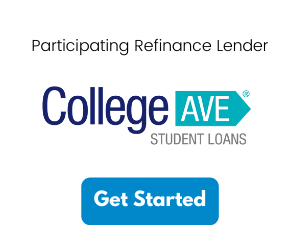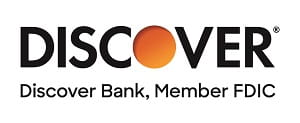Private student loans could emerge as the optimal choice for international students aspiring to study in the United States. They offer the potential to cover the full cost of attendance, providing a comprehensive financing option for your studies. Nevertheless, it's important to acknowledge that these loans typically require a cosigner who is either a U.S. citizen or a permanent resident..
Conversely, while federal student loans are often the first consideration for funding higher education, they are only accessible to U.S. citizens, permanent residents, or eligible noncitizens. As a result, personal savings, scholarships, grants, institutional aid, and private student loans stand out as viable avenues for international students seeking financial support for their college expenses.
International Students in Need of Student Loans
The lenders featured below offer student loans to international students who apply with a creditworthy U.S.-based cosigner. You can compare their rates, flexible repayment options, and more.
How to Apply for an International Student Loan
To apply for an international student loan, you will need to find a lender who offers student loans to international students. We work with private student loan lenders who can help you get the funds you need for your education, and we recommend that you follow these steps:
1. Locate a Cosigner
As an international student, getting a cosigner is likely going to be the most effective way for you to save money. A cosigner is a person who agrees to be financially liable for the loan if you, the borrower, are unable to repay it. Because of the increased risk for the lender, non-cosigned loans typically come with higher interest rates compared to cosigned loans. If you need help figuring out how to find a cosigner, jump to the What if I don’t have a cosigner? section.
2. Compare Lenders
As with all loans, you will want to compare interest rates, repayment plans, and the benefits offered by different lenders. We recommend that you explore your options before applying. Lenders get creative with their benefits, with some offering different rewards like the ability to skip payments or get cash back for graduating.
3. Apply With Your Preferred Lender
After you have compared lenders, the last step is to apply with the lender that works best for you. When you submit your application, the lender will review your application and let you know if you were approved or denied for your student loan.
Where International Students Can Get Loans for College
Edvisors can help you locate lenders who offer student loans to international students, including the lenders featured below.
International Student Loan Minimums and Maximums
Most lenders have a minimum loan amount of $1,000.
There are two considerations when it comes to the maximum amount you can borrow. The first is the amount your school will allow you to borrow. The maximum amount your school will allow you to borrow is your full cost of attendance (which is determined by your school) minus all other financial aid you are awarded. And the second consideration is how much the lender says you can receive based on your creditworthiness, along with your cosigner’s credit history. In some cases, the lender may not be able to offer the full amount of the loan you are requesting.
After you and your cosigner complete the loan application and have been approved, your school must confirm that you are enrolled at least half-time and certify the amount of the loan you have requested. Your lender will likely automate this process.
International Student Loan Interest Rates
The interest rate for an international student loan will depend on the lender and loan option you select. Some loans may offer a fixed rate or a variable rate. After you select the loan that works best for you, you will need to review the terms or contact the lender directly with your specific questions.
The Annual Percentage Rate (APR) is based on a base index (such as Prime or the 1-month LIBOR or the SOFR) plus a markup that will be lower or higher depending on your cosigner’s credit history. The stronger the credit history, the lower the APR you may be able to get. Each lender may offer a fixed interest rate, a variable interest rate, or both (which then means you get to choose).
So, in addition to the creditworthiness of the applicant and cosigner ,the type of index and whether or not the rate is fixed or variable will determine your actual APR. This makes it especially important to research your options and compare lenders in advance to understand the interest rates and repayment terms available to you.
Also, keep in mind that many lenders offer interest rate reductions and other ways to save money on your loan. For example, if you or your cosigner enroll in automatic payment deductions from a checking or savings account, you may be able to save 0.25% off your interest rate. You could also save money by selecting a loan that has zero application or origination fees.
International Student Loan Eligibility and Documentation Requirements
The eligibility standards for international student loans are pretty straightforward and will be fairly consistent from lender to lender. The following are the basic criteria to qualify:
- You will need a valid student visa (F-1) to finalize the loan.
- International students must be enrolled at least half-time in a degree-granting program at an eligible institution.
- While you can begin the loan application prior to being accepted to your desired college, you will need to be accepted with your student visa to finalize the loan.
- A cosigner is typically required for all international student loan programs, but there could be a few exceptions.
- The cosigner must be a creditworthy U.S. citizen or permanent resident who has lived in the U.S. for at least two years.
- Non-U.S. citizens or non-U.S. permanent residents cannot act as a cosigner. U.S. permanent residents acting as a cosigner may be asked for proof of residency such as a current U.S. Citizenship & Immigration Services (USCIS Form I-551) (Permanent Resident Card, a.k.a. Green Card).
- A temporary, in-school U.S. address is usually required on the application – as opposed to a permanent, international home address.
- A Social Security Number is not required for international students, but one or more of the following documents may be required:
- Copy of your passport, F-1 Visa, H1-B Visa, J-1 Visa, L-1 (L1A or L1B) Visa, Form DS-2019, Form I-20, Form I-766, Form I-797. Check with your lender to understand which documents are necessary to complete your loan application.
Will I Need a Student Loan Cosigner?
What If I Don't Have a Student Loan Cosigner?
If you don't have a cosigner, you may not be able to borrow a private student loan. However, we recommend you talk to the Financial Aid Office at your school about other options, or try to find a cosigner. Here are some tips on locating a cosigner for your student loans:
- Ask close friends or family members who are U.S. citizens to serve in this role
- Ask an advisor, sponsor, or family friend
- Ask someone with whom you have a relationship from your community, volunteer organization, faith-based community, etc.
- Ask someone from your university’s alumni association
- Ask more than one person in case your first option doesn’t have strong enough credit
Remember, cosigners are equally responsible for repaying the loan – including if you are unable to do so. This makes it extremely important to choose an individual where there is mutual trust. Think about individuals you will be in touch with for years beyond your college or graduate school education; someone with an interest in your success.
Can International Students Get Loans for College?
International students can get private student loans for college. There are several lenders that work with international students studying in the U.S.. Most lenders will require a U.S. citizen or permanent resident who is creditworthy to act as a cosigner for the loan.
What to Read Next
Best Private Student Loans for February 2025
Scholarships for International Students




















